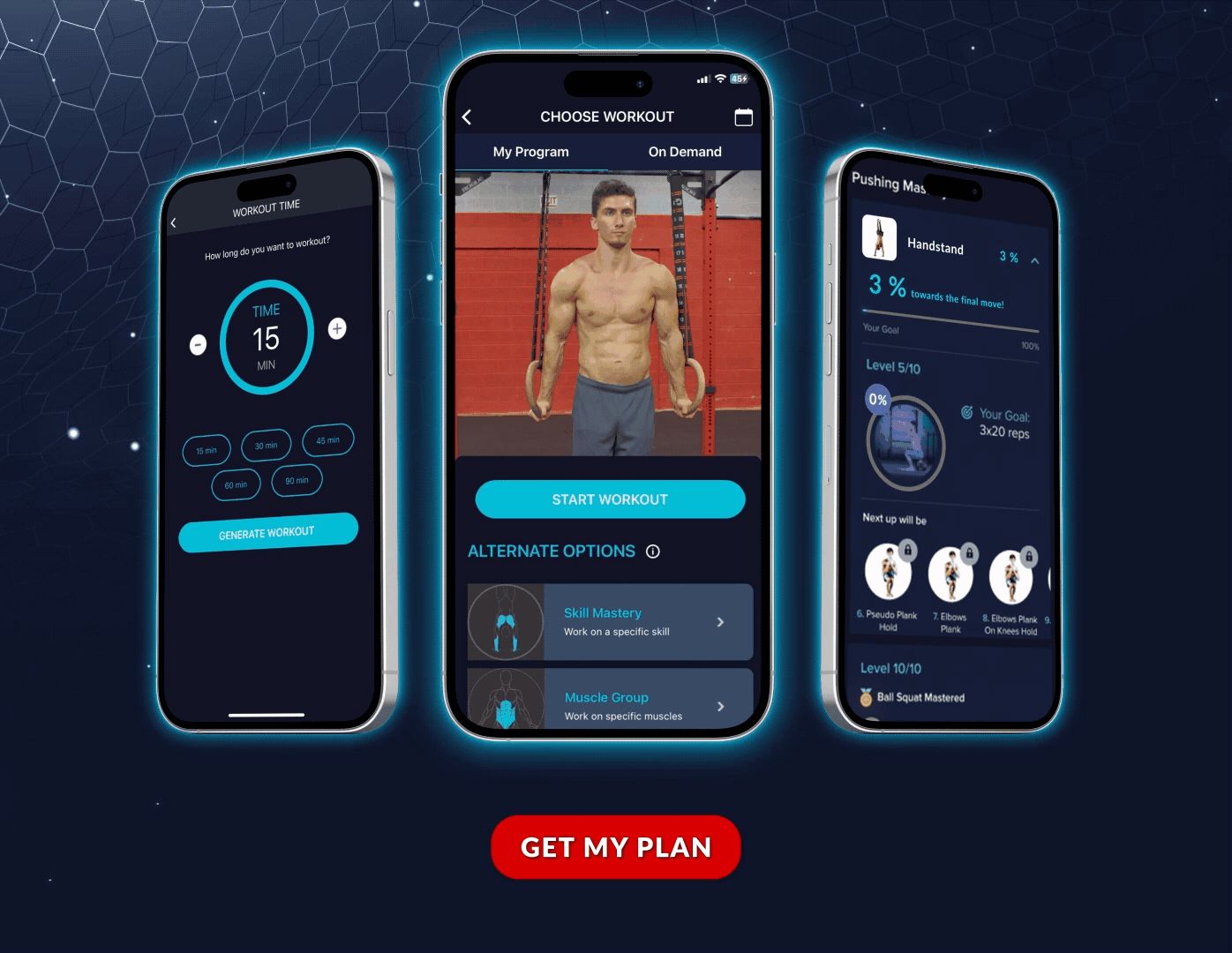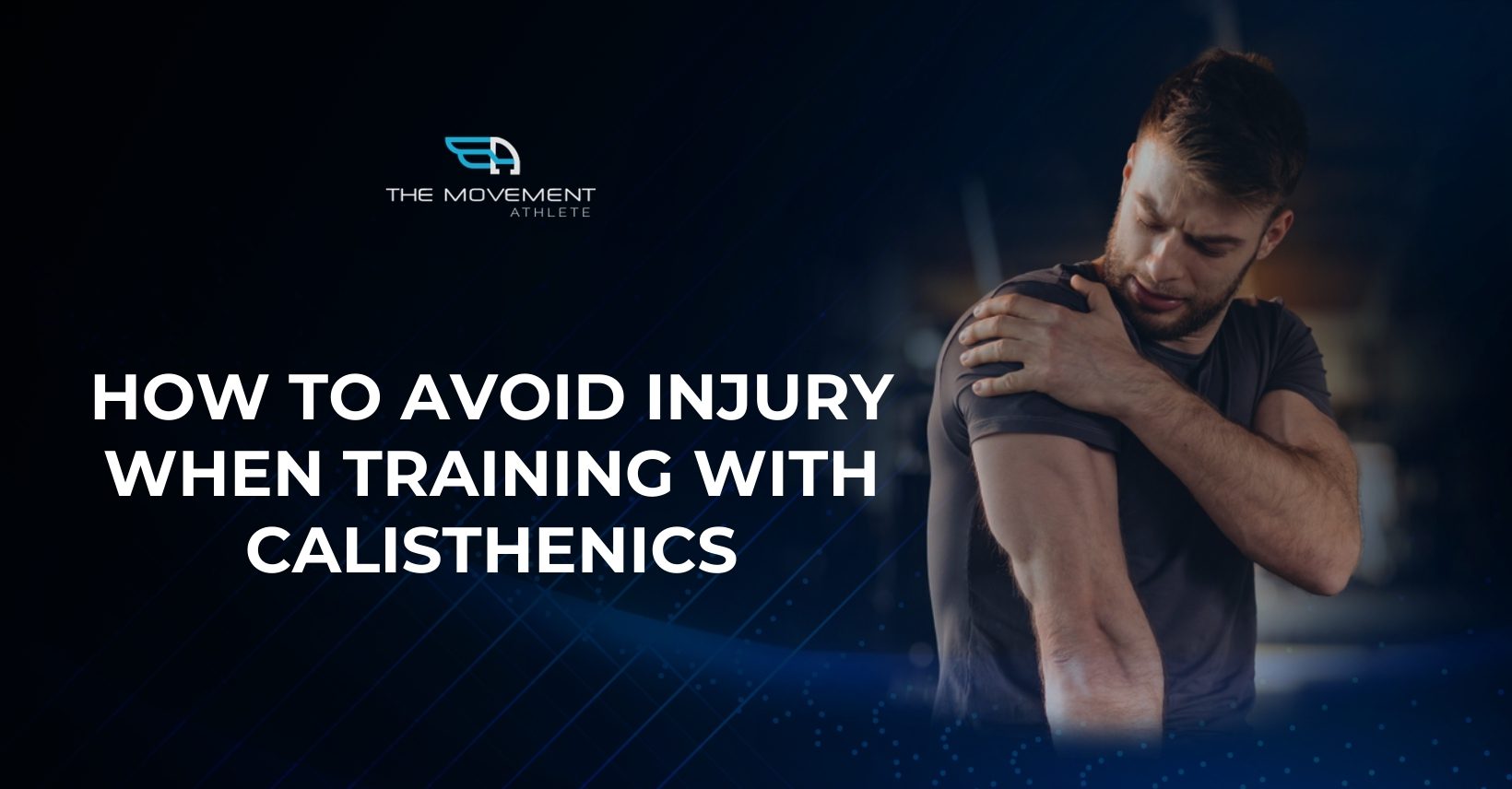

📖 Read Time: 6 Minutes
🏋️ Join the tribe of Movement & Calisthenics Athletes
People just like you that are working with their own body weight to get strength, lose fat, build muscle, recover from injuries and live their best lives!
🧐You’re just about to step up for your first set of pull-ups, and you feel extra confident because you’ve been doing bodyweight training for a time.
You know the exercises are safe, so there’s no need to worry about any injury –
or is there?
🤜Injury prevention is a serious issue that needs to be addressed before getting into any workout routine. This blog post will give you some tips on avoiding becoming injured when training with calisthenics – or any other exercise approach!
Why do injuries occur?😱

Photo from jcom from freepik
Calisthenics is a fantastic approach to achieving excellent fitness levels, lose fat build muscle, and good health safely, BUT that doesn’t mean you won’t get injured.🤕
THE TRUTH is that there will ALWAYS be a risk of injury when you are moving. The more you move, the higher the risk goes. The more high-impact, higher level, or explosive move you do, the higher the risk.😢
Injuries during workouts occur due to two main reasons:
First, your body isn’t prepared to do the move or the workout. This involves many factors that we’ll talk about later.
OR
You got really unlucky.👎
The risk of injury is a part of life, and it will always exist while we move. It doesn’t matter if it’s calisthenics, weight lifting, or other discipline or sport you do.
But that doesn’t mean we can’t do any about it.
We can minimize the risk by being smart with our training.
So here are 10 tips 🔐 you need to follow to avoid jumping on the pain train and save your body from all the hurt, physiologically, mentally, and financially.
10 TIPS YOU CAN DO TO AVOID THE PAIN
✅Consult with a healthcare specialist
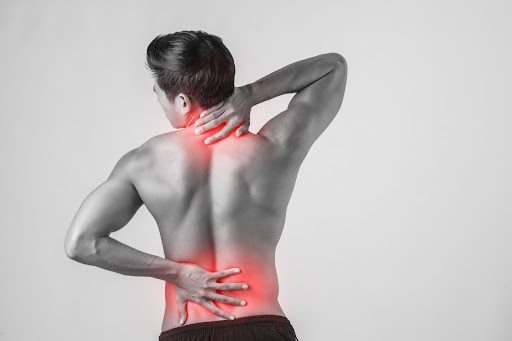
You can visit the specialist even before you experience any pain just to be sure. Photo from freepik
As we mentioned before regarding being prepared, the first step you can visit your local physiotherapist and talk to them about your goals and current situation.
Then work together with the professional on how you can start training, the exercises that will be beneficial for each of your muscles groups, etc.
Make sure you every detail if you have any issues you need to be addressing to avoid existing hidden strains.
It’s also not wrong to visit your healthcare🩺specialist to check if you’re good internally as well.
✅Do the RIGHT warm-up for your workout
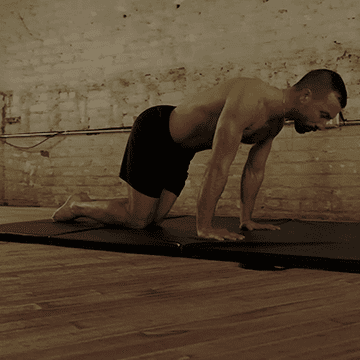
This wrist prep is done by continuously rocking forward and backward.
You’ve probably heard this before: do warm-ups to avoid injuries.
Why does it work?🤔
Warm-ups help your muscles get ready for the work ahead and to be able to handle it without any problems. It lubricates the joints, increases your heart rate and blood flow.
Make sure you do a proper warm-up that suits your workout by including exercises for all of your muscle groups. It’s not only good before training with calisthenics – but it also helps if you’re doing any other kind of exercise!💪
They also help you prepare mentally when you’re less tired or sore from a long workout beforehand. It primes your mental state so you can do your primary training with all the vigor.
✔️Proper warm-up
And keep in mind what’s mentioned before: Do a proper warm-up routine that’s specific to your workout.
There’s minimal help in jogging for 10 minutes before training your upper body. While it does increase your heart rate, it doesn’t warm up the specific joints and muscle groups that you will do in your workout.
Upper body training requires upper body warm-up. Lower body training requires lower body warm-up. Handstand skill work requires a warm-up that’s focused on shoulder mobility and wrist preparation.
Each warm-up is different, which is why you need to read the guide for the ultimate warm-up.
❌Avoid static stretches
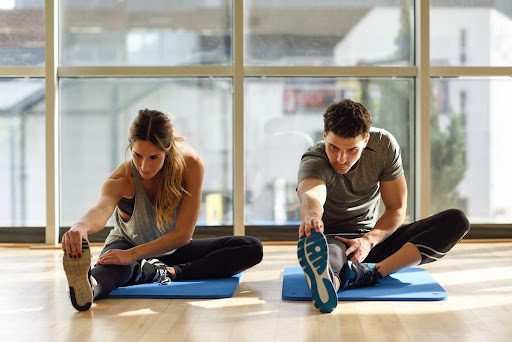
Photo from javy_indy from freepik
Recent study shows that static stretches BEFORE a workout, bodyweight training, weightlifting, or anything else, can decrease muscle strength. This means that your muscles cannot produce their maximum effort which can make you overestimate your ability leading to hurting yourself.
Instead, do dynamic stretches or easier variations of the bodyweight movements that you will do.☝️
For example, if you’re training handstand push-ups, you can do regular push-ups or pike push-ups to prepare your wrists and shoulders for the upcoming demands of the hspu on your joints and shoulders.
✅ Move gradually
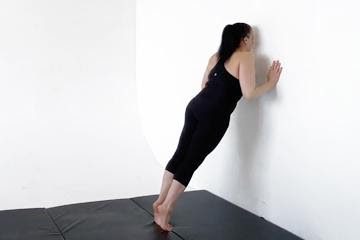
Wall push-ups are perfect for complete beginners who would love to build push-up strength.
When we’re highly motivated, it’s easy to overestimate your skill and move to a higher progression immediately the next session after.
👎Unfortunately, our body takes time to adapt to a specific stimulus. We don’t get strong overnight. We don’t learn new moves overnight. Our body needs time to adjust and grow stronger for these new movements.
This means training should be progressive,💯 meaning you need to go up in difficulty slowly over the course of months (or even years).
If not, your risk of injury will increase drastically!😢
I want to avoid using a cliche, but “Rome isn’t built in a day.”
You don’t need to make big changes each session, but just make sure you’re at least making it more challenging than the previous one, even just by adding a single rep in an exercise.
Trust the process.💥
✅Listen to your body

Photo from our-team from freepik
When you make progress, it’s also easy to get excited and make the big mistake of NOT listening to your body.
Many programs and coaches push you to train in your 110% every day.
👉Theoretically, it may be true to keep on progressing, but in reality, it isn’t even possible to give your 100% every day.
We have a ton of responsibilities as we grow older, and these responsibilities take time and energy.
When we need to train, sometimes, we can no longer give our all without increasing the risk of injury.🤕
Sometimes, we just need to dial down our training and keep it moderate.
Just keep moving with light activity, or if needed, take a full rest day.😃
Listen to your body. It will let you know once it’s getting tired. When it does, don’t abuse it.😤
Adaptive training
One way you can combat life’s drainage from your workout energy is through adaptive bodyweight training.
The Movement Athlete implements autoregulation in their calisthenics workout programs which allows for adaptive training.
Autoregulation is the ability of the program structure to adjust to your ever-changing situation, energy levels, mood, and current skill level.
Calisthenics athletes no longer need to worry about following an overtly strict program that drains their energy over a period of time. It makes training sensible and sustainable while still helping you achieve your fitness goals and prevent injury.
Here are two Movement Athletes who previously suffered from injuries but now training with The Movement Athlete’s adaptive calisthenics. They grow stronger, more mobile, and now reduced the risks of injuries and RE-INJURIES!
Andrew Cox’s story: “It’s had a huge effect on my day-to-day life movements that used to injure me. Now I can do pain-free.”🏆
Kiara Done’s story: “I started calisthenics as a way to strengthen my body and to improve, maintain my joints and reduce risk of re-injury in future.”🏆
✅ Train according to your skill level
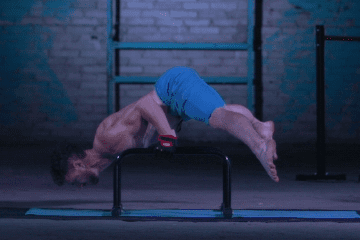
If you can’t do a straddle planche, don’t even try doing a straddle planche push-up.
Many try advanced variations and advanced movements too soon, raising the risks at an all-time high.
Forget about joint pain; you can get fractures or muscle tears that could be serious if you’re doing something too much too soon.🤒
👊That’s why calisthenics has progressions, a series of moves that help you build the elements you need for a specific exercise.
Although training with your body weight already minimizes the risks since you won’t be lifting more than your entire body weight, there is still a risk so keep that in mind.
Use progressions that suit your skill levels; you can focus on getting stronger while avoiding any pain.🙌
If you got to try out a move, play sensibly. Use the easier progression of the movement, then build your way up.
✅ Learn proper form
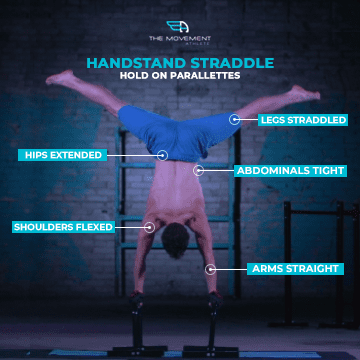
A Movement Athlete coach’s pointers on a straddle handstand hold.
No matter where you are in your fitness journey, proper form is a must.💯
Take time to learn even the most minor details. You don’t necessarily have to do the “perfect” technique each every rep. When fatigue sets in, there will be some breakdowns with your technique. Just focus on keeping the proper cues in check to avoid stress unnecessary stress on your joints and allow for maximum development of your potential.
👊Controlled movement
When we say controlled movement, it doesn’t necessarily mean slow.
Controlled means that you should have a complete awareness of your movements and that your muscles are contracted when performing the movements. This allows your joints to be protected and helps you avoid injuries.
For example, when doing box jumps, you shouldn’t just jump onto the box by contracting your body to exert force then lousily land on the box. Muscles should still be contracted so that you can absorb the explosive energy and control movements.
👊QUALITY OVER QUANTITY.
Learn the proper technique for each movement, no matter how basic it is.
For example, squats. You might think it’s an easy exercise, but a small difference in form can ruin your knees and mobility. Make sure your movement follows the correct squat path, feet hip-width apart, and you have core work checked for maximum control.
Avoid letting your knees cave inward or outwards with your squats to avoid hurting your joints. Keep them aligned with your feet.
If you find it too difficult to get the technique down, consider moving to an easier variation. Be sure to execute each move in your bodyweight workouts competently.
✅ Eat and sleep well 😃
Warm-ups and progressions aren’t the only ones you need to prepare your body for a workout. Proper nutrition and a goodnight’s sleep do wonder to your workout and injury prevention.
🤜Just imagine yourself hungry and tired with a night of terrible sleep.
Your thought gets foggy. You get irritable. You couldn’t think. You couldn’t move.
Now imagine working out in that physical and mental state. It’s just setting you up for disaster.
☝️That’s why you must eat well and be well-rested before a workout session.
There’s also nothing wrong with working out first thing in the morning fasted. The key here is to eat light and healthily the night before.
This will allow your body to digest well while you are recovering from yesterday’s workload so that you can do another one tomorrow morning with no problems at all. Starting the morning with a good cup of coffee might also boost your energy for your workout.
✅ Choose an exercise that works best for you
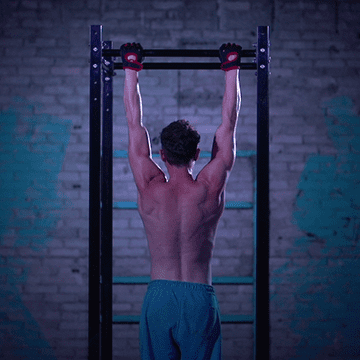
Bodyweight training offers a ton of exercise variations. There is no absolute best in all for everyone in a technicality, but there could be some exercises that could work in your favor.
📌Moves that fits you
For example, if you lack mobility in your shoulders and find it challenging to raise your arms overhead, you might benefit more from pull-ups than chin-ups.
Chin-ups are great for developing your lats and other back muscles while also hitting more of your biceps, BUT the supinated grip can potentially put too much stress on your tennis elbow. Overdoing the chin-ups while lacking the necessary mobility (or potentially doing incorrect movements and cues) could lead to a repetitive strain injury, in other words, the dreaded golfer’s elbows.
Golfer’s elbow is terribly common in bodyweight training, and a common denominator is the chin-ups. This doesn’t mean chin-ups are bad. This just means that you need to focus on other elements, such as upper body mobility when training with chin-ups.
📌Stop when it hurts
Speaking of the golfer’s elbow, most athletes get this because they train through pain.
When you experience anything painful, ⛔️ STOP and ASSESS your situation.
Regarding the chin-up example, you can move to a different variation such as the pull-ups or neutral grip chin-up as the pain subsides. These variations put less stress on your tendons while still working your back. Then use other exercises for your bicep development.
✅ Get a PROPER program
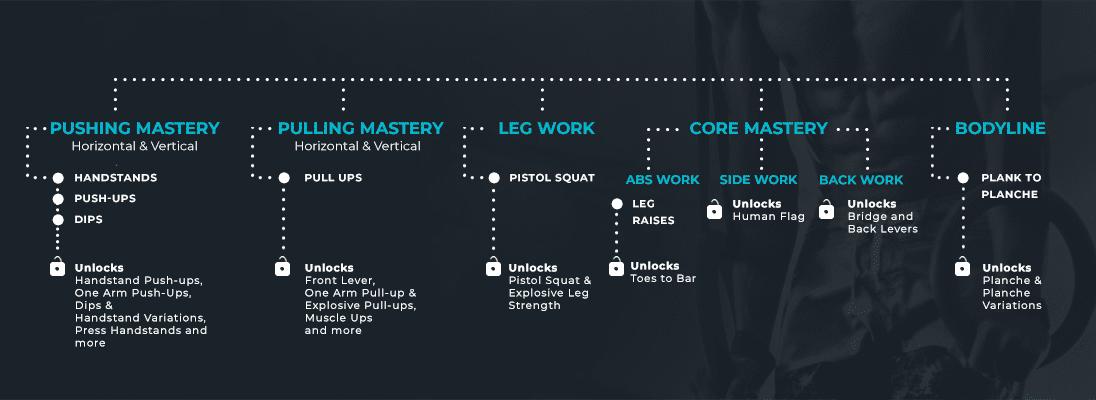
Moving and working out without a program can get you “some” results but a high potential for failure and injuries.
If you want to progress safely and efficiently, you should have a program that fits you.
🏆Adaptive, progressive, and personalized
As mentioned earlier, the adaptive and progressive approach minimizes the potential of hurting your body and your progress.
The Movement Athlete’s (TMA) program design covered exactly these by providing a solid foundation for your body to work on as you progress in your calisthenics journey.💯
🏆Why The Movement Athlete is the NEW WAY of training calisthenics
TMA takes this to another level by providing a personalized approach to your program design.
Everybody is different, so One-size-fits-all programs will not cut it and will only lead you to disappointment.
✅ Know where you are in your journey

To know precisely the perfect program for you, you first need to know the current capability of your body.🤸
By doing so, you get to take the necessary step as similar to when you first have consulted with a professional.
This also provides a better opportunity to create a personalized program based on your skills.
If you’re looking for an excellent way to know where you are and where to start, check out this free assessment below.👇
To conclude:
Calisthenics is a great way to get fit and stay healthy. No wonder it’s becoming more popular each day. It can be done anywhere, anytime, and with anyone.
All you need is your body weight to start out with! But even when we work hard, we need to make better decisions to be able to train for longevity and get to live our best lives!🤸
Train smart – not hard! 💪💪
Related Articles You’ll Love:
Ready to get started?
Get your free personalized training plan now
